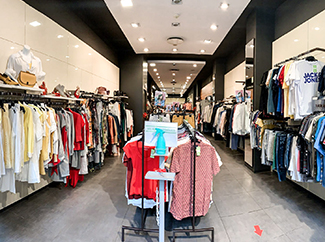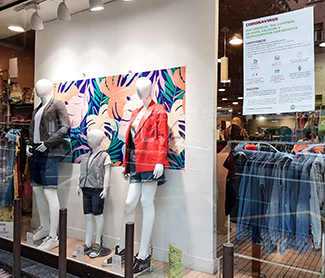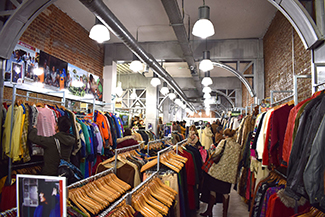consent_cookie
Duración: 1 year
Stores the user's cookie consent state
17-05-2021
Purchases of used garments at Humana's secondhand stores have increased 38% per point of sale in recent years. In parallel, the number of clients has increased by 20%. This trend confirms that the rise of second hand is an unstoppable reality, not in vain it promotes a model of responsible consumption, it favors the prevention of waste and the sustainability of the textile sector.
On World Recycling Day, which is celebrated today, Monday, May 17, Humana reminds that buying secondhand fashion avoids the annual consumption of millions of new garments. According to a report by the Foundation, six out of ten users recognize that, when buying a garment in the entity's stores, they do not need to purchase it at another conventional point of sale. "This replacement index confirms the environmental value of reuse, because there is no garment more sustainable than the one already manufactured," says Elisabeth Molnar, general director of the Foundation.
Humana has 45 stores distributed in four cities: Madrid (23), Barcelona (20), Seville (1) and Granada (1), which sell second-hand garments, chosen after a selection process in the facilities of Leganés (Community Madrid) and l'Ametlla del Vallès (Barcelona).
Figures for the last five years
The upward trend in second-hand fashion is evident in recent years. In 2015, Humana had 40 stores that sold 2.8 million garments; In 2019, the number of items purchased amounted to 5.2 million in 53 stores. This phenomenon has been accompanied by an increase in the number of customers attracted by reused clothing: 1.2 million customers six years ago compared to 1.9 million before the pandemic.
“It is clear that we have opened more stores and it is also true that the secondhand offer convinces more and more people. The result is that, since 2015, the number of customers has risen by 20% and the number of garments sold by 38%, by point of sale ”, indicates Elisabeth Molnar.
In 2020, the Humana store network was closed for more than two months; The pandemic affected the waste management sector and the sale of secondhand fashion, as well as other economic activities. Despite everything, last year the second-hand offer attracted 1.4 million customers who bought 4.2 million garments.
“The current model of consumption in the field of fashion is not sustainable”, affirms the general director of the entity, “a more rational production is necessary in accordance with a more responsible consumption. The consumer accumulates great power and an enormous capacity to improve the system with his decisions: what to buy, why to do it, what environmental and social impact it causes ”. And she adds: “The green and circular models, which generate a positive social impact, are the truly useful and essential in this scenario. Undoubtedly, that is where reuse affects. The most sustainable item is the one already manufactured ”.
Second-hand consumption is skyrocketing
A study carried out by ThredUp, a US company dedicated to the online sale of secondhand clothing, predicts that this market will grow almost twice as fast as the fast fashion segment by the end of this decade. It indicates that while the coronavirus pandemic has hurt sales of clothing, the second hand has exploded: last year it grew 25 times faster than the retail sector in general and it is estimated that second-hand online sales will increase at the same time. throughout this year by 69%.
The report concludes that 79% of consumers plan to reduce their clothing purchasing budget in the next 12 months, and that four out of five people are receptive to buying second-hand items when they have less money to spend.


